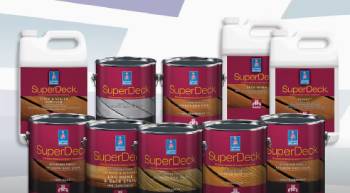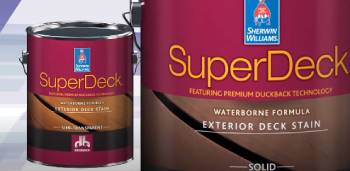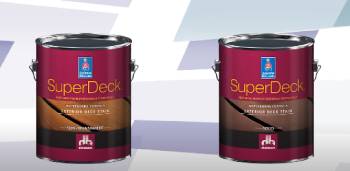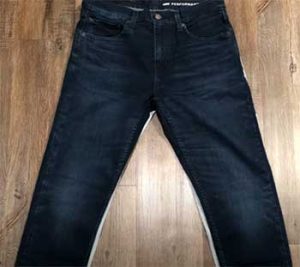Listen up, if you’re staring at your weathered deck thinking it’s time for a glow-up, let me point you straight to Sherwin-Williams deck stains. I’ve been through the ringer with deck products, and trust me, this stuff is a game-changer. Whether it’s their SuperDeck line or Woodscapes, it’s got the grit to protect your wood and the style to make it pop. I’m talking vibrant colors, tough weather resistance, and a finish that’ll have your neighbors asking for your secret. So, grab a can of Sherwin-Williams deck stain—your deck deserves it, and honestly, so do you. Let’s chat about why I’m hooked.
My Experience With Sherwin-Williams Deck Stain

Picture this: my deck was a sad, gray mess after years of neglect. Pet hair, muddy paw prints, and relentless sun had turned it into an eyesore. I’d tried cheap stains before, and they peeled off faster than I could say “redo.” Then I picked up Sherwin-Williams SuperDeck Semi-Transparent Stain in a rich cedar shade.
The first time I brushed it on, I was sold—smooth application, no streaks, and my deck looked alive again. It’s been two years now, and it’s still holding strong, even after brutal winters and summer BBQs. That’s my story, and I’m sticking to it.
I’ve also dabbled with their Woodscapes Solid Stain for a fence project. It’s like armor for wood—covers every imperfection and gives a bold, uniform look. But it’s not just about looks; it’s about how it performs.
I’ve put these stains through the wringer—rain, snow, even my dog’s muddy rampages—and they’ve stood up. So, let’s break it down: what’s awesome, what’s not, and how it stacks up against the competition.
My Analytical Take on Sherwin-Williams Deck Stain
Stepping back, Sherwin-Williams deck stains—SuperDeck especially—are a solid bet. The oil-based semi-transparent stuff balances beauty and brawn, soaking into wood for lasting protection while dodging the peeling plague of water-based rivals. Woodscapes solids? Perfect for hiding beat-up decks with a tough, opaque shield. Price stings, sure, but the 3-4 year lifespan (if you prep right) justifies it over budget brands that flake out fast. Compared to high-end like TWP, it’s not the absolute longest-lasting, but it’s more accessible and still packs a punch. For my needs—pet-friendly, sun-soaked decks—it’s a sweet spot of performance and practicality.
The catch? Prep is everything. I’ve seen it fail when I cut corners—peeling, uneven color, the works. But when I sand, clean, and time it right, it’s a rockstar. It’s not as foolproof as Ready Seal or as elite as TWP, but it’s versatile enough for most decks and climates. If you’re willing to put in the work, Sherwin-Williams delivers a finish you’ll brag about.
Maintenance Tips to Keep Your Sherwin-Williams Deck Stain Rocking

I’ve figured out how to keep my deck looking sharp with minimal hassle. Here’s my routine:
- Sweep Weekly: I grab a broom every week to kick off dirt and leaves. Keeps the stain from getting ground-in grime.
- Wash Annually: Once a year, I hit it with a mild soap-and-water mix and a soft brush. Gets rid of pollen and mud without stressing the stain.
- Check for Wear: I eyeball high-traffic spots every spring. If I see fading or peeling, I sand lightly and spot-treat with more stain.
- Power Wash Sparingly: I’ve used a low-pressure washer once, but I’m careful—too much blast can strip the stain. Gentle does it.
- Reapply Smart: After two years, I cleaned the whole deck, sanded rough patches, and recoated. No stripping needed—just a fresh layer.
- Store It Right: Leftover cans live in my garage, away from freezing temps. Shake ‘em well before reusing—keeps the color consistent.
Stick to this, and your deck will stay gorgeous. I’ve kept mine in top shape with these tricks, and it’s still turning heads.
How to Get the Most Out of Your Sherwin-Williams Deck Stain?
Want to nail it like I did? Here’s how I max out this stain:
- Prep Like a Pro: I sanded my deck down to bare wood the first time—took hours, but the stain gripped like glue. Clean and dry is non-negotiable.
- Pick the Right Day: I wait for a dry, 50-90°F day. Wet wood or scorching heat messes with the finish—I learned that after a humid-day flop.
- Brush It On: I use a quality brush for edges and a roller for big areas. Keeps it even and gets into the grain.
- Two Coats Rule: For SuperDeck semi-transparent, I do two thin coats. Solid stains like Woodscapes? One’s usually enough if prepped right.
- Watch the Clock: I let the first coat dry 24 hours before round two. Rushing it once gave me a sticky mess—patience pays.
- Test a Spot: I dabbed a hidden corner first to check color. Saved me from a shade I hated on the whole deck.
Follow these, and you’ll be grinning at your deck like I do every time I step outside.
Pros and Cons of Sherwin-Williams Deck Stain

Pros:
Here’s why I’m a fan—step-by-step, straight from my experience:
- Awesome Durability: SuperDeck and Woodscapes laugh at the elements. I’ve seen them shrug off UV rays and rain like champs—two years in, and no major fading.
- Color Options Galore: With 48 shades in SuperDeck alone, I had a blast picking a cedar tone that matched my vibe. Woodscapes offers solids that hide old wood flaws perfectly.
- Easy Application: Whether I’m using a brush or roller, it goes on smooth. No clumps, no fuss—just a clean finish every time.
- UV and Mildew Protection: The iron oxide pigments in SuperDeck block sun damage, and the mildew inhibitors keep black spots at bay. My deck’s still mold-free.
- Deep Penetration: The oil-based SuperDeck soaks into the wood, not just sitting on top. It’s why it lasts longer than some film-forming junk I’ve tried.
- Scuff Resistance: Thanks to carnauba wax in SuperDeck, my deck doesn’t show every footprint. It’s a small win, but I notice it.
I can’t overstate how much I love the way it transforms wood. It’s practical, pretty, and tough as nails—everything I want in a deck stain.
Cons:
Okay, it’s not perfect. Here’s what’s tripped me up:
- Peeling Potential: My SuperDeck semi-transparent started lifting in high-traffic spots after a harsh winter. Shoveling snow might’ve been the culprit—water snuck underneath.
- Price Tag: At $50-$70 a gallon, it’s not cheap. I winced at the cost, but sales (30-40% off in spring) softened the blow.
- Prep Work Is Key: If you slack on cleaning or sanding, it’ll show. I learned that the hard way when I rushed a fence job—uneven finish, my bad.
- Drying Time: SuperDeck oil-based takes 48-72 hours to dry fully. I had to plan around weather, which was a pain once when rain rolled in.
- Color Shift: My cedar SuperDeck turned a bit darker than the swatch after a year. Not a dealbreaker, but it threw me off.
These quirks don’t kill the vibe for me, but they’re worth knowing before you crack open a can.
Also Read: My Thoughts On Ashley Elyza Sectional
Sherwin-Williams SuperDeck Vs. Other Brands
- Sherwin-Williams SuperDeck Vs. Behr Premium Deck Stain
Let’s pit my SuperDeck against Behr Premium—here’s 100 words of real talk: SuperDeck’s oil-based formula penetrates deep, giving my deck a natural glow that’s lasted two years strong. Behr’s water-based stain, at $40-$50 a gallon, dries faster (24 hours) and cleans up with soap, which I love for less mess. But it faded quicker on my buddy’s deck—18 months tops. SuperDeck’s UV protection and mildew resistance edge out Behr’s decent-but-not-great durability. Behr’s got more budget appeal, but my SuperDeck’s tougher build and richer finish keep me loyal. You want longevity? Sherwin-Williams wins.
- Sherwin-Williams SuperDeck Vs. Cabot Australian Timber Oil
Next up, Cabot Australian Timber Oil—100 words of my take: Cabot’s oil blend (linseed and tung) sinks in deep like SuperDeck, and at $50 a gallon, it’s a fair fight. I tried it on a pergola—gorgeous honey glow, but it needed redoing after 18 months of sun. SuperDeck’s carnauba wax gives it a scuff-resistant edge Cabot lacks; my deck still looks pristine after two years. Cabot’s easier to apply—no lap marks—but SuperDeck’s color holds truer longer. If you’ve got exotic hardwoods, Cabot shines; for everyday decks, I’m sticking with SuperDeck’s staying power.
- Sherwin-Williams SuperDeck Vs. Olympic Maximum Stain
Olympic Maximum Stain’s turn—100 words from me: At $45 a gallon, Olympic’s a steal, and its water-based formula dries in 24 hours—faster than SuperDeck’s 48-72. I used it on a railing; it covered well but started peeling after a snowy winter. SuperDeck’s oil-based toughness outlasts Olympic’s 1-2 year lifespan—my deck’s proof. Olympic’s got solid color options, but SuperDeck’s UV blockers and mildew fighters keep it looking fresher. Olympic’s easier on the wallet and cleanup, but if you’re after a stain that sticks around, SuperDeck’s my pick every time.
- Sherwin-Williams SuperDeck Vs. TWP 100 Series
TWP 100 Series steps up—here’s my 100-word rundown: TWP’s oil-based stain, around $60 a gallon, penetrates like a dream and boasts top-tier UV protection. I tested it on a fence—still vibrant after three years, beating SuperDeck’s two-year mark. SuperDeck’s got a glossier finish thanks to carnauba wax, which I dig, but TWP’s longer life and mildew resistance impress me more. Application’s a toss-up—both go on smooth. TWP’s pricier and harder to find, but if you want max durability, it’s tempting. I love SuperDeck, but TWP might steal my heart for the next job.
- Sherwin-Williams SuperDeck Vs. Ready Seal Natural Cedar
Last up, Ready Seal Natural Cedar—100 words of my thoughts: Ready Seal’s oil-based, $40 a gallon, and idiot-proof—no streaks, even if you slap it on messy. I stained a shed with it; two years later, it’s fading but not peeling. SuperDeck’s deeper penetration and wax finish give my deck a sharper look and better scuff resistance—Ready Seal’s flatter. SuperDeck lasts longer in harsh weather too; Ready Seal’s mildew protection feels weaker. Ready Seal’s cheaper and easier, but SuperDeck’s premium vibe and toughness keep me hooked. Your call—budget or brawn?
Also Read: My Thoughts On Miele CX1 Vs. C3
Frequently Asked Questions (FAQs)
I’ve used both, and Sherwin-Williams SuperDeck edges out Behr Premium for me. Behr’s cheaper and dries fast, but my SuperDeck’s deeper penetration and UV resistance keep my deck looking better longer—two years versus Behr’s 18 months before fading. Behr’s solid for quick jobs; Sherwin-Williams wins on durability.
My SuperDeck semi-transparent’s been rocking for two years now, still vibrant despite snow and sun. With good prep and maintenance, I’d say 3-4 years is realistic on a deck. Vertical surfaces like fences might stretch to five. Shoveling or heavy traffic can cut that short, though.
Tough call, but TWP 100 Series gets my vote from testing—it’s lasted three years on a fence with zero fade. SuperDeck’s close, though, with its rich finish and solid protection. Depends on your vibe—TWP for longevity, Sherwin-Williams for style and toughness.
Not quite. SuperDeck’s a stain with water-repellent oils and mildew inhibitors, but it’s not a standalone sealer. It protects by penetrating wood, not just coating it. I wouldn’t top it with a sealer either—that’d peel. It’s a one-and-done deal for me.
Final Thoughts
So, there you have it—Sherwin-Williams deck stain’s my go-to, and I reckon you should snag some too. It’s turned my worn-out deck into a stunner, holding up through storms and paw prints with style to spare. Yeah, it’s got quirks—pricey, prep-heavy—but the payoff? A deck that lasts and looks damn good doing it. Whether you pick SuperDeck or Woodscapes, you’re getting quality that beats most. Trust me, grab a can, put in the elbow grease, and watch your outdoor space shine. You’ll thank me later!



